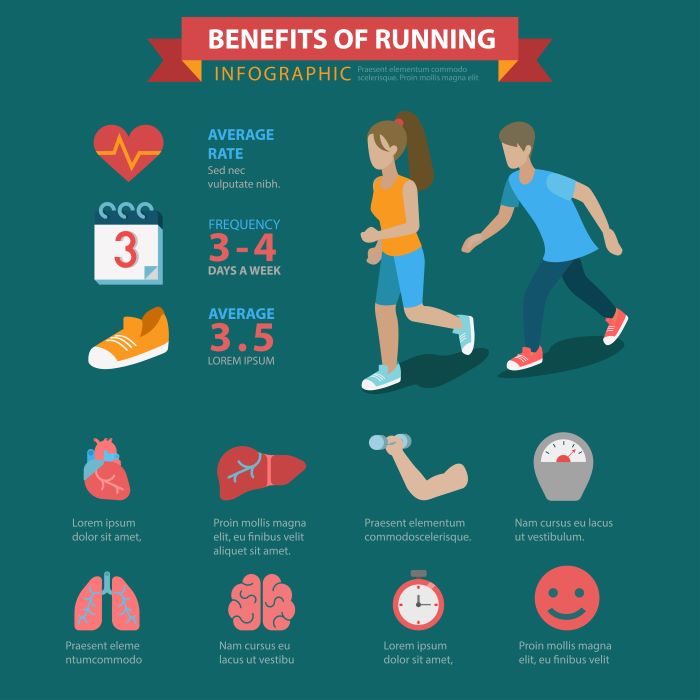Incorporating running downhill workouts into your training regimen can yield a multitude of benefits that enhance both your speed and overall performance. One of the primary advantages is the improvement in speed. Downhill running encourages a faster turnover rate of your legs, which translates to increased pace during races and training sessions.
Furthermore, these workouts can significantly enhance your running form. As you navigate downhill slopes, your body naturally adapts to maintain balance and control, which can lead to better posture and alignment when running on flat terrain. This focus on form helps reduce the risk of injuries often associated with improper mechanics.
Additionally, downhill running is an excellent way to build strength in your lower body. The eccentric loading on your muscles helps fortify your quads, hamstrings, and calves, making them more resilient to fatigue. This strength transfer is crucial, especially during uphill runs or races, where your muscles need to be at their best.
Finally, engaging in downhill workouts can also add variety to your training program, keeping it fresh and exciting. The rush of speed combined with scenic trails can make your workouts enjoyable and invigorating.
To fully embrace these benefits, visit our website to learn more and get started today! Click here.
How Downhill Running Improves Speed and Endurance
Downhill running is not just an exhilarating experience; it’s a strategic training method that can significantly enhance your speed and endurance. When you run downhill, the gravitational pull aids your momentum, allowing you to reach higher speeds with less effort. This experience can translate to improved performance on flat or uphill surfaces, as your body learns to handle increased velocities.
As you sprint down hills, your body engages in a quick turnover of the legs, which develops your fast-twitch muscle fibers. These fibers are essential for sprinting and explosive movements, making downhill running a perfect tool for athletes aiming to boost their speed. The adaptations from this training can result in a noticeable increase in your pace during races.
Moreover, downhill running serves as an effective endurance builder. The consistent effort required to maintain speed while descending challenges your cardiovascular system and promotes better oxygen utilization. This aspect not only enhances your endurance during long runs but also prepares you for varied race terrains.
Another critical factor is the way downhill running impacts your fatigue resistance. By challenging your muscles in a controlled manner, you condition them to handle greater workloads and recover more efficiently. This resilience is vital when tackling lengthy races or challenging courses.
In summary, integrating downhill running into your training can be a game-changer in boosting both speed and endurance in your running journey.
Essential Techniques for Effective Downhill Running

To maximize the benefits of downhill running workouts, it’s crucial to adopt specific techniques that enhance efficiency and reduce the risk of injury. Here are some essential techniques to consider:
- Maintain an Upright Posture: Keeping your torso upright allows for better balance and control. Leaning too far forward can lead to overstriding and increased impact on your joints.
- Shorten Your Stride: Focus on taking shorter, quicker steps rather than long strides. This technique helps to maintain speed while reducing the strain on your knees and ankles.
- Utilize Your Arms: Engage your arms for balance and momentum. Swinging them in rhythm with your legs can help propel you forward and maintain stability.
- Relax Your Muscles: Tension can slow you down, so try to keep your body relaxed. Allow your legs to move fluidly, and let gravity assist in your descent.
- Focus on Foot Placement: Pay attention to where your feet land. Aim for a soft landing to absorb impact and prevent injuries. Landing on the midfoot rather than the heel can also aid in smoother transitions.
- Practice Braking Techniques: While running downhill, you may need to control your speed. Gently applying pressure on your heels and using your arms to stabilize can help manage your descent without losing control.
By incorporating these techniques into your downhill running routine, you can enhance your performance, boost your speed, and enjoy the thrill of descending with confidence.
Incorporating Downhill Workouts into Your Routine

Integrating downhill workouts into your training regimen can significantly improve your running performance and speed. However, it’s essential to approach this addition thoughtfully to maximize benefits and minimize injury risks. Here are some strategies for incorporating downhill running into your routine:
- Start Slowly: If you’re new to downhill workouts, begin with gentle slopes and gradually increase the intensity and duration. This approach allows your body to adapt without overwhelming your muscles and joints.
- Designate Specific Days: Consider setting aside certain days for downhill training. For example, you might dedicate one or two days a week specifically to downhill running, allowing your body to recover on other days.
- Combine with Interval Training: Integrating downhill running with interval training can enhance speed and endurance. Alternate between sprinting downhill and jogging or walking uphill to develop strength and speed effectively.
- Mix in Recovery Runs: After a challenging downhill workout, schedule a recovery run on flat terrain. This practice promotes healing and helps your muscles recuperate while maintaining your running frequency.
- Listen to Your Body: Pay attention to how your body responds to downhill workouts. If you experience discomfort or pain, it may be wise to adjust your technique or reduce the frequency of these sessions.
By thoughtfully incorporating downhill workouts into your routine, you can take full advantage of their benefits, enhancing your overall running performance while enjoying the exhilarating experience of fast descents.
Safety Tips for Running Downhill Workouts

While running downhill workouts can provide excellent benefits for speed and strength, it’s crucial to prioritize safety to prevent injuries. Here are some essential safety tips to keep in mind:
- Choose the Right Terrain: Opt for well-maintained trails or roads with a manageable slope. Avoid overly steep or uneven surfaces that could increase the risk of falls or strains.
- Focus on Form: Maintaining proper running form is vital, especially when descending. Keep your body upright, engage your core, and lean slightly forward. This position helps with balance and reduces the impact on your joints.
- Wear Appropriate Footwear: Invest in high-quality running shoes with adequate grip and cushioning. Proper footwear can help absorb shock and provide better traction on downhill surfaces.
- Warm Up and Cool Down: Always include a thorough warm-up before your downhill workouts to prepare your muscles and joints. Similarly, cooling down afterward helps with recovery and reduces muscle stiffness.
- Stay Hydrated: Dehydration can lead to fatigue and impaired performance. Ensure you drink enough water before, during, and after your workout to keep your body functioning optimally.
- Run with a Buddy: If possible, run with a partner or group. This not only enhances safety in case of an accident but also provides motivation and support during your workouts.
By adhering to these safety tips, you can enjoy the exhilarating experience of downhill running while minimizing the risk of injury, allowing you to focus on improving your speed and performance.
Tracking Progress and Measuring Improvement

Monitoring your progress is key to achieving your fitness goals, especially when it comes to running downhill workouts. Keeping track of your improvements not only helps you stay motivated but also allows you to adjust your training plan effectively. Here are several methods to track your progress:
- Use a Running App: Many apps are available that can track your distance, pace, and elevation changes during your runs. These tools often provide valuable insights into your performance over time.
- Maintain a Training Log: Keeping a written record of your workouts can help you identify patterns, strengths, and areas for improvement. Note down details such as distance, time, and how you felt during each workout.
- Set Specific Goals: Establish clear, measurable goals for your downhill workouts. For instance, you might aim to reduce your time on a specific route or increase the distance run downhill. This will give you tangible targets to work towards.
- Incorporate Regular Assessments: Schedule periodic tests to evaluate your performance, such as timed runs on the same downhill course. This will give you a benchmark to compare future workouts against.
- Seek Feedback: Join a running community or group where you can share your experiences and receive constructive feedback. Engaging with fellow runners can provide new perspectives and encourage improvement.
By utilizing these strategies, you can effectively track your progress and measure your improvement in downhill running. Remember, every step taken is a leap towards your fitness freedom! Visit our website to learn more and get started today! Click here.


